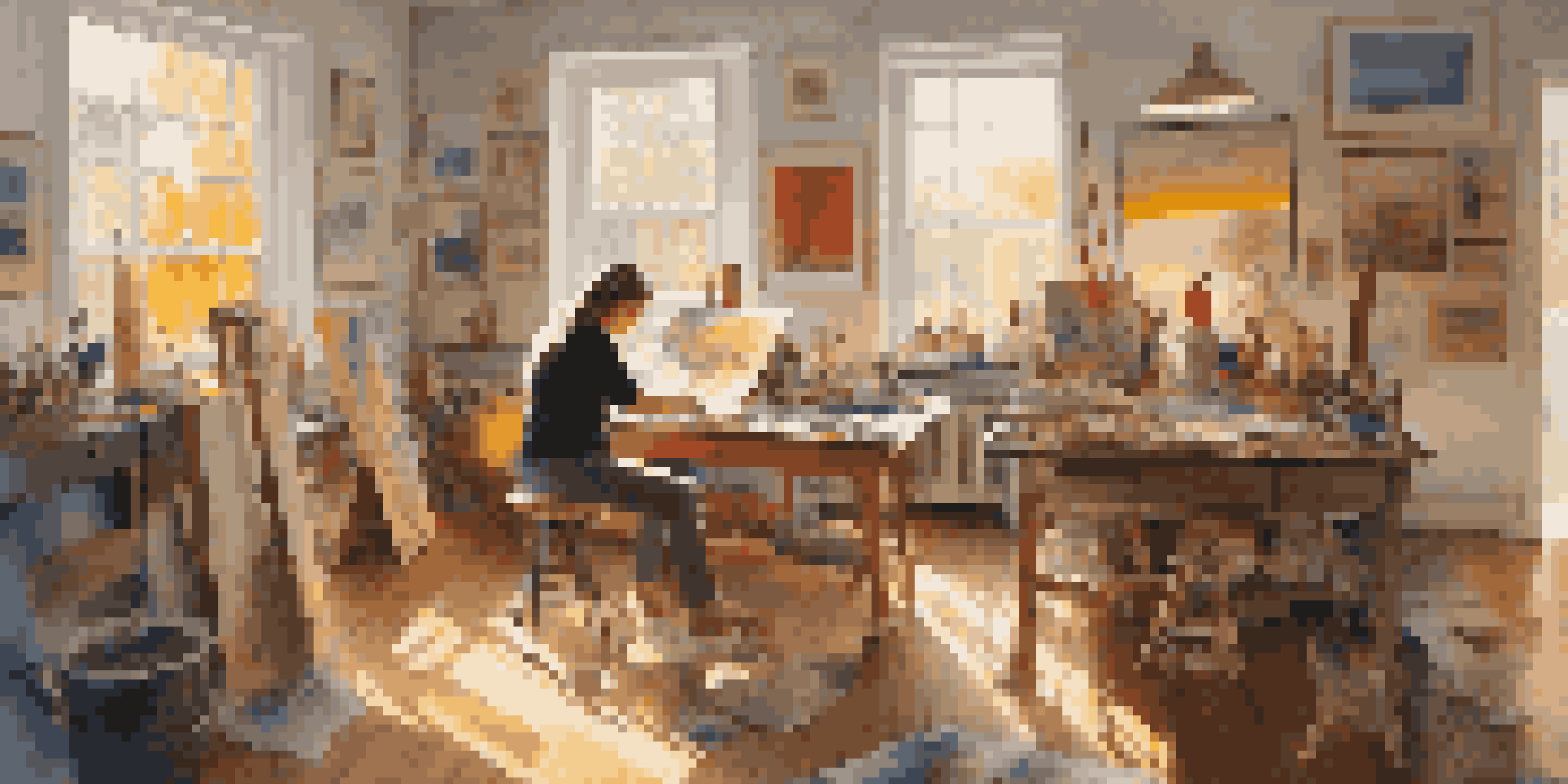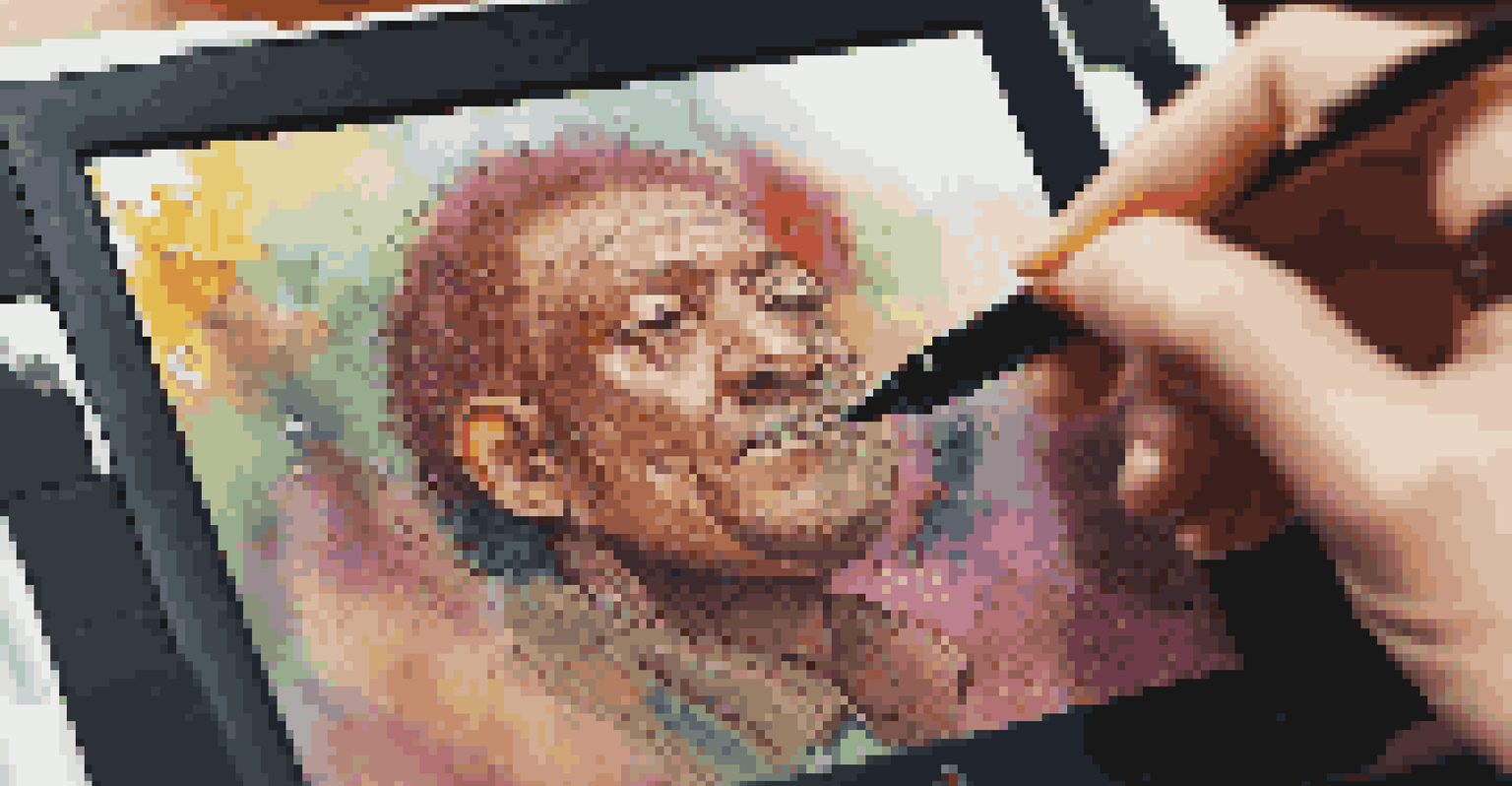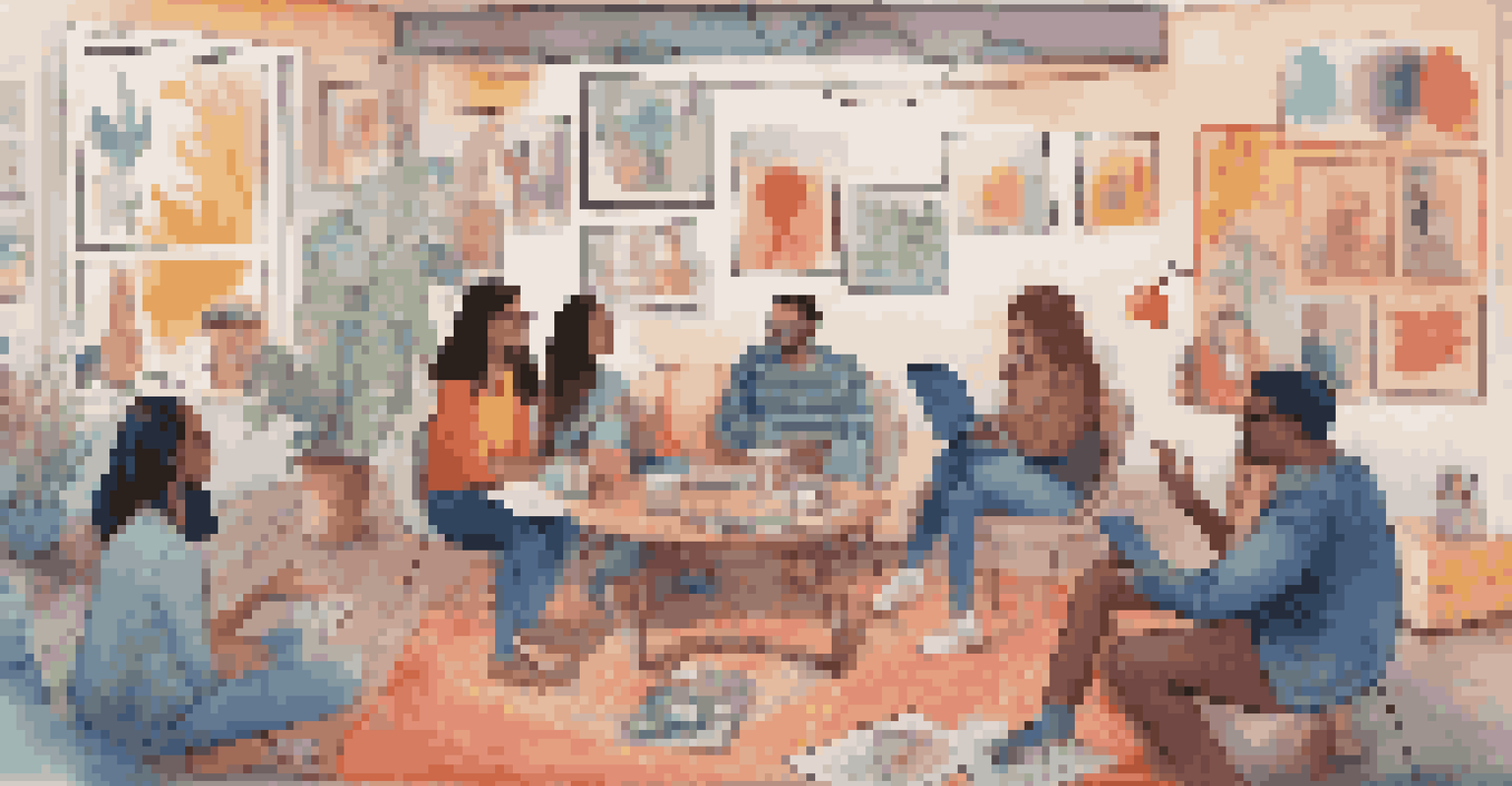The Evolution of Art Criticism in the Digital Age

The Rise of Digital Platforms and Art Criticism
In the past, art criticism was often confined to print media, where a select few held the power to shape public opinion. With the rise of digital platforms, anyone with an internet connection can share their thoughts on art, democratizing the field. This shift has opened the door for diverse voices, allowing critics from various backgrounds to share their insights and experiences.
The digital age is not just about technology; it’s about a new way of engaging with art that reflects the diverse voices and perspectives of our society.
Platforms like Instagram, blogs, and YouTube have become vital spaces for art criticism, where visuals and commentary coexist. Artists can now showcase their work directly to audiences, bypassing traditional gatekeepers. This evolution has led to a more vibrant and inclusive dialogue about art, as the barriers to entry have been significantly lowered.
However, this accessibility also raises questions about the quality and depth of criticism. While more voices are contributing, not all insights hold the same weight, leading to a mix of thoughtful analysis and superficial commentary. Navigating this landscape requires discernment from audiences who seek genuine critique amidst the noise.
The Role of Social Media in Shaping Art Criticism
Social media has irrevocably changed how art is discussed and critiqued, allowing for real-time engagement with artists and audiences alike. Platforms like Twitter and Instagram enable critics to share immediate thoughts and reactions, fostering a dynamic conversation around exhibitions and artworks. This immediacy can enhance the relevance of criticism, making it feel more connected to current events and trends.

However, the fast-paced nature of social media can also dilute the depth of analysis. Critics often find themselves in a race to be the first to comment, which can lead to hasty judgments rather than well-rounded critiques. In this environment, the challenge is to balance speed with substance, ensuring that insights are both timely and meaningful.
Digital Platforms Democratize Critique
The rise of digital platforms has opened art criticism to diverse voices, allowing anyone with internet access to share their insights.
Moreover, the interactive aspect of social media allows audiences to engage directly with critics and artists through comments and shares. This two-way communication can enrich the conversation, providing diverse perspectives and fostering community. Yet, it also means critics must be prepared for immediate feedback, both positive and negative, which can be a daunting experience.
The Influence of Blogging on Art Critique
Blogging has emerged as a significant medium for art criticism, offering a space for in-depth analysis and personal reflection. Unlike traditional print critiques, blogs allow for longer, more nuanced discussions, enabling critics to delve deeper into themes, techniques, and cultural contexts. This format can encourage a more personal connection between the critic and the audience.
Art criticism has always been a conversation; now, it’s a dialogue that includes everyone, thanks to the platforms we have at our fingertips.
Many art bloggers have carved out niches, focusing on specific genres or movements that resonate with them. This specialization not only enriches the discourse but also helps cultivate dedicated followings. As these bloggers share their unique perspectives, they contribute to a broader understanding of art that may not be covered by mainstream outlets.
At the same time, the blogosphere has its challenges, as the sheer volume of content can make it difficult for individual voices to stand out. Critics must find ways to differentiate their work, whether through distinctive writing styles, visual presentations, or innovative approaches to critique. This competition can spark creativity, pushing critics to continually evolve their craft.
The Impact of Online Communities on Criticism
Online communities, such as art forums and Facebook groups, have transformed how critics and art lovers engage with each other. These spaces allow for open discussions, where members can share their thoughts on various artworks and exhibitions. The sense of camaraderie fosters a supportive environment where individuals can explore their ideas without fear of judgment.
These communities also serve as platforms for collective criticism, where diverse opinions can coalesce around a piece of art. This collective approach can lead to richer discussions, as members contribute unique viewpoints that might not be represented in traditional criticism. Through these conversations, individuals can gain new insights and appreciation for art.
Social Media Shapes Art Discussion
Social media has transformed art criticism by enabling real-time engagement, though it challenges critics to balance speed with depth.
However, the anonymity and distance of online interactions can sometimes lead to unconstructive criticism or trolling. Critics must navigate these challenges while fostering a respectful and thoughtful dialogue. Balancing openness with accountability is essential to ensure that these communities remain constructive spaces for art critique.
The Changing Nature of Art Institutions and Critique
Art institutions, such as galleries and museums, are adapting to the digital age by redefining how they engage with critics and audiences. Many are now embracing online platforms to showcase exhibitions, allowing for broader accessibility and engagement. This shift not only increases visibility for artists but also creates new opportunities for critics to explore and discuss art in innovative ways.
Additionally, institutions are beginning to recognize the value of digital criticism as part of their outreach strategies. Collaborating with online critics can enhance their programming and offer fresh perspectives on their collections. This partnership can help institutions reach wider audiences, as digital critics often have established followings that can draw attention to exhibitions.
However, this evolution also raises questions about the role of traditional art criticism within these institutions. As online voices gain prominence, how do established critics fit into this new landscape? Navigating this shift requires both critics and institutions to adapt, fostering relationships that can enrich the overall art experience.
Challenges Faced by Digital Art Critics
Despite the opportunities presented by the digital age, art critics face unique challenges in this new environment. One significant issue is the overwhelming amount of content available online, which can make it difficult for critics to find their niche. This saturation can lead to burnout, as critics may feel pressured to constantly produce content to stay relevant in a fast-moving landscape.
Moreover, the shift to digital platforms has blurred the lines between professional critics and amateur commentators. This democratization means that the quality of critique can vary widely, with some voices lacking the expertise that seasoned critics bring to the table. As a result, audiences may struggle to discern which critiques are insightful and which are less informed.
Challenges for Digital Critics Persist
Despite new opportunities, digital art critics face challenges like content saturation and the need to maintain quality amidst varying expertise.
Finally, the reliance on digital platforms can pose risks for critics regarding privacy and mental health. The immediacy of online feedback can lead to public scrutiny and harsh criticism, which can be daunting. Balancing the desire for engagement with personal well-being is crucial for critics navigating this challenging landscape.
The Future of Art Criticism in a Digital World
Looking ahead, the future of art criticism in the digital age is likely to be characterized by further innovation and adaptation. As technology continues to evolve, critics may leverage new tools, such as augmented reality and virtual reality, to enhance their critiques. These advancements could provide audiences with immersive experiences that deepen their understanding of art.
Moreover, as digital literacy becomes increasingly important, the role of critics may expand to include educating audiences about how to engage with art online. This could involve guiding audiences in navigating digital platforms, understanding different perspectives, and developing critical thinking skills. By fostering a more informed audience, critics can help elevate the overall discourse around art.

Ultimately, the evolution of art criticism in the digital age presents both challenges and exciting opportunities. By embracing new technologies and fostering inclusive dialogue, critics can continue to play a vital role in shaping our understanding and appreciation of art. The journey ahead will undoubtedly be dynamic, reflecting the ever-changing landscape of both art and society.